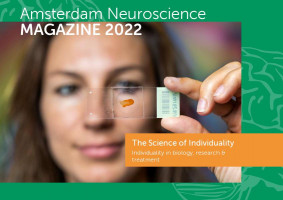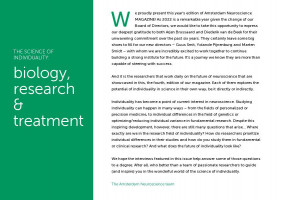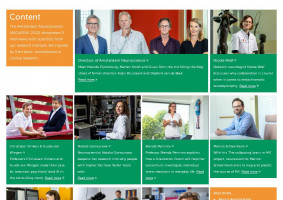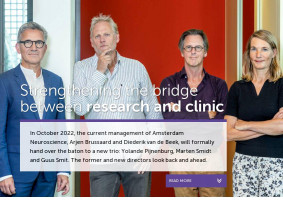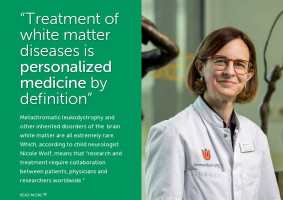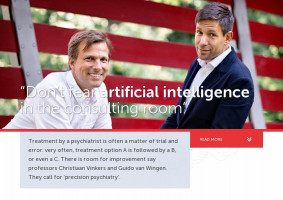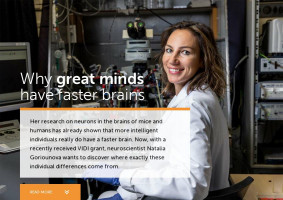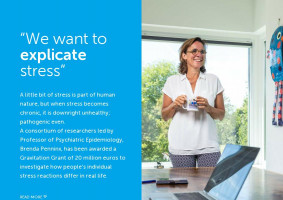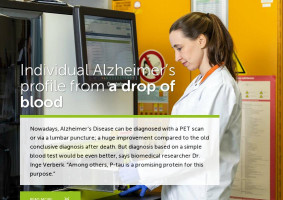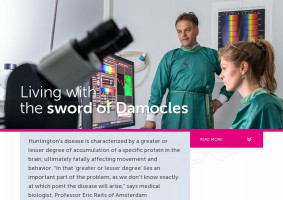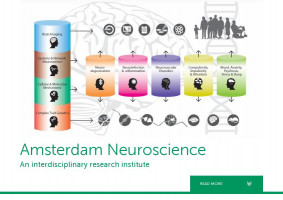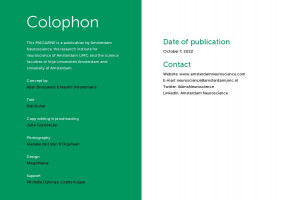A little bit of stress is part of human nature, but when stress becomes chronic, it is downright unhealthy; pathogenic even.
A consortium of researchers led by Professor of Psychiatric Epidemiology, Brenda Penninx, has been awarded a Gravitation Grant of 20 million euros to investigate how people’s individual stress reactions differ in real life.
Read More
(1)_w850_h1384_1.jpg)
As a specialist in the field of depression and anxiety, Professor of Psychiatric Epidemiology at Amsterdam UMC, Brenda Penninx, may seem a stranger among stress researchers. “By the same token, of course, anxiety and depression are two domains where chronic stress is very often at the root. Sure, a little stress is part of everyday life, but chronic stress can not only cause mental symptoms, it can also induce physical problems, such as cardiovascular disease or obesity.”
Much of what is now known about the fundamental biology of stress comes from experimental research in a laboratory setting. “There is hardly any decent information available that has come from everyday life,” Penninx explains. “A major problem is that stress is difficult to objectify. If someone visits their general practitioner with stress complaints, it is pre-eminently a subjective experience. What one person experiences as stressful does not necessarily result in complaints for another person. Moreover, chronic stress is a potentially major health problem, which is harder to measure in an experimental setting than acute stress. We want to work on these problems over the next ten years in the Stress in Action project, for which we received a Gravitation Grant of 20 million euros from the Ministry of Education, Culture and Science this October,” an elated Penninx says.
Technology validation
The Stress in Action project is both multidisciplinary and multicentered. Psychologists, psychiatrists, geneticists and internists, as well as specialists in artificial intelligence (AI) and technology, from Vrije Universiteit Amsterdam, Amsterdam UMC, Erasmus MC, UMC Groningen, University of Groningen, Utrecht University and the Technical University of Twente, among others, will work together, under the leadership of Penninx, to make stress in everyday life measurable. “We will use the first three years to validate existing and new techniques. Quite a lot of technology already exists, even commercially available technology, such as smartwatches and smartphones, for example. Your watch or phone can already track your heart rate, count your steps, record your sleep patterns and store your GPS data. We want to find out in detail how useful, how valid and also how user-friendly all this available and yet-to-be-developed technology is.”
Linking questionnaires to automated data
In the second phase of the project, Penninx and her colleagues want to collect objective data, and also link it to questionnaires that participants will fill out. “We want to look at active and passive data collection in conjunction. For example, if GPS data and heart rate measurement show that the stress response seems to be especially elevated in a certain location, such as at work or with specific family members, then we can ask targeted questions about what might be causing that response.”
Participants in the study will largely be sought from existing cohorts. “A lot of information on mental and physical health has already been collected in the Netherlands Study of Depression and Anxiety (NESDA) cohort, and a lot of other relevant information has also been collected in, for example, the Vrije Universiteit Amsterdam’s Netherlands Twin Register (NTR) or in Erasmus University’s Generation R Study,” says Penninx. “If we could recruit the participants of Stress in Action from these cohorts, it would not only save an enormous amount of registration of basic information, but it would also offer the possibility to make a distinction between gender, health situation or socio-economic status. All those aspects are already known to have the potential to influence the stress response.”
Penninx is not worried that participants in existing cohorts will be ‘overloaded’ when they are also recruited for Stress in Action. “On the contrary. Experience has already shown that many participants enjoy adding an extra dimension to their participation in the study, for example through a smartwatch they receive.”
Making individual differences visible
As the information from the cohorts gradually becomes visible, the researchers hope to gain particular insight into the individual differences between people in their response to stress. “Within the four dimensions in which stress can express itself – the physical, the behavioral, the affective and the cognitive – many reactions are possible. Genetics can play a role here – is someone more susceptible or insensitive to stress due to hereditary load? – but also environmental characteristics, such as workload, having young children, the nature of a relationship, or a past or present trauma.”
Penninx emphasizes that all of this will be long-term work. “We particularly want to investigate chronic stress, so participants will hopefully spend months or even years gathering information. Taking this into account, you will also understand that we have experts in the field of machine learning in our project. In the huge mass of data that we’re collecting, it’s not going to be easy by any means to recognize patterns. That’s where AI will really give us a hand.”
Interventions
In the final phase of the ten-year project, the researchers also hope to try out the first interventions. “And there, too, some initial tentative steps have already been taken in commercially available technology. A watch can send an alert when there is a certain heart rate or a disturbed sleep pattern. There is also clothing that collects information and even interiors, such as a vase, that literally change color when someone has a high heart rate for a long time. That may sound futuristic, but frankly, I think we need to get used to that kind of intelligent technology. Who knows, maybe there will be patches in the future too – like the ones diabetics use to easily measure their blood glucose, without pricking – that can also measure the ‘stress hormone’ cortisol. Our project is not only an exceptional long-term project, it also requires outstanding out-of-the-box thinking from the researchers involved.”
Of course, with a focus on individual differences in people’s stress response, the researchers also have to be aware that the interventions will need to be quite diverse. “If we only come up with N-of-1 interventions, then yes, we do have a problem,” Penninx says with a wink. “But I assume that there will definitely be recognizable patterns that apply to larger groups, which we can factor in.”
Stress is here to stay
The researchers are under no illusion that they will be able to completely eradicate the negative effects of stress through this study. “Stress is here to stay,” Penninx acknowledges. “Nevertheless, it would be good if we could overcome some of the problems induced by stress, such as anxiety, depression, cardiovascular problems or obesity, by intervening earlier when chronic stress threatens to get out of hand. In this respect, I am particularly happy with the long-term funding we have received for this project. This topic requires pre-eminently longitudinal research, and it doesn’t help if you have to plead for money every four years. Now we can build a central, permanent research infrastructure for stress in everyday life.”
Photography: Marieke de Lorijn

